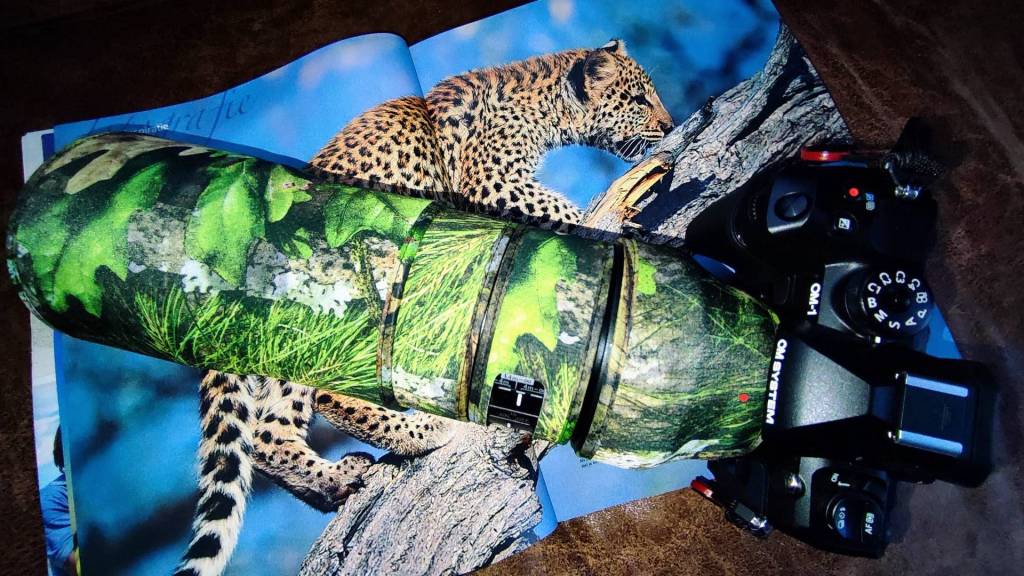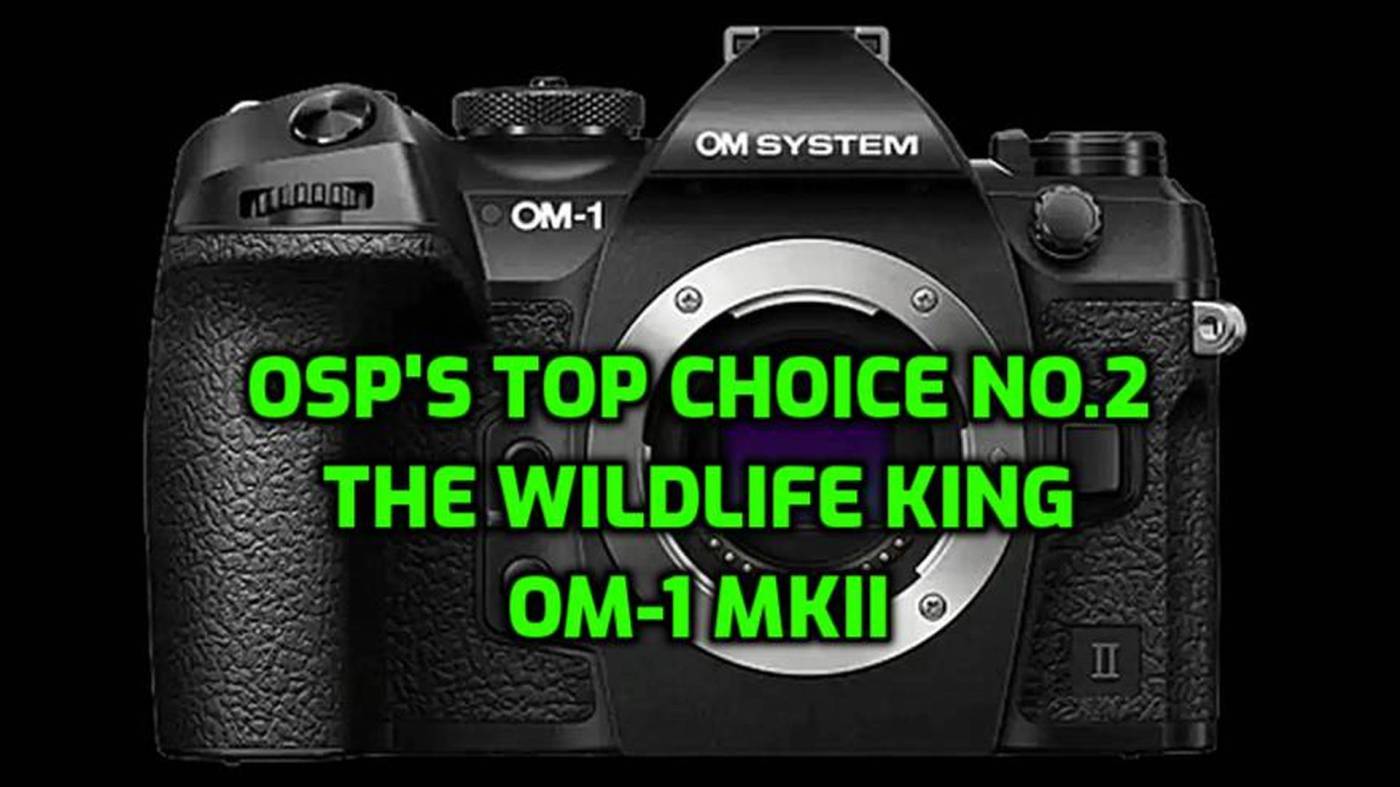5 minute read.
Moving along with our top picks, we’ve arrived at the OM System OM-1 Mark II. Now, this one’s a slightly different story. If you’re comparing price tags, megapixel counts, or spec sheets, plenty of Nikon, Canon, and Sony fans will say, “Hey, my camera does that too!” – and, to be fair, they’re not wrong… up to a point.
But here’s the thing: if you’re eyeing the OM-1 Mark II as a street shooter, a vacation snapper, or just a general “shoot everything” camera, there are probably other models out there that make more sense. Except when it comes to nature and wildlife photography – and that’s where this camera truly comes into its own.
Olympus (and now OM System) have always focused on making cameras for photographers, especially those who love the outdoors. Panasonic Lumix does a great job too, but Olympus/OM System has always had that photographer-first DNA. Not that they’re bad at video – far from it – but their real superpower is capturing the wild. You get extreme IP53 dust and moisture protection, class-leading stabilization, and a Micro Four Thirds sensor that hits the sweet spot for nature shooters.
🌧️ Weather Sealing – How Tough Is This Camera, Really?
The OM-1 Mark II is one of the few cameras with an actual IP53 rating – meaning it’s dust-tight and shrugs off rain from any angle (up to 60°). Nikon and Canon? They’ll tell you their pro bodies are “weather sealed,” but you won’t find a real IP spec anywhere.
Translation: if you want proven, quantifiable weather resistance, the OM-1 Mark II is in a class of its own.
🌀 Image Stabilization – Handheld King?
The OM-1 Mark II offers up to 8.5 stops of CIPA-rated in-body stabilization. That’s about as good as it gets. Canon’s R6 II hits around 8 stops, Nikon’s Z8/Z9 around 5–6.
Bottom line: if you shoot handheld in tough light or with long glass, the OM-1 Mark II will spoil you.
🦌 Wildlife & Nature – Weight and Portability
| Feature | OM-1 Mark II | Canon R6 II / Nikon Z8/Z9 |
|---|---|---|
| Weather Sealing | IP53 certified | “Weather sealed” (unrated) |
| Stabilization | 8.5 stops (class-leading) | ~8 stops (Canon), 5–6 (Nikon) |
| Weight & Size | Light, compact | Heavier, bulkier |
| Wildlife Use | Superb portability + IBIS | Top AF/IQ, but heavy |
🍻 Image Quality
Let’s save the best for last: what about image quality and low light?
Sure – full-frame sensors like those in the Nikon Z6 II or Z8 will outperform Micro Four Thirds in low-light. That’s just physics. But that advantage is only meaningful in specific scenarios: huge prints or extreme cropping.
With its stacked BSI sensor, the OM-1 Mark II delivers excellent results up to ISO 6400, and modern noise reduction tools narrow the gap even further. Unless you’re pixel peeping, no one – not clients, not Instagram, not your photo club rival – will see the difference.
And let’s be honest: most of us aren’t hauling 600mm f/4s worth over €10,000. The OM-1 Mark II with the 300mm f/4 PRO or 100–400mm delivers pro-level results in a kit you can actually carry and afford.
🤔 APS-C vs OM-1: What Context Really Means
Photographers upgrading from older APS-C bodies like the Fujifilm X-T20/X-T30 or Canon/Nikon DSLRs to something like a Z6 II often describe it as “game-changing.” And it can be – compared to those older sensors.
But the OM-1 Mark II is not your average crop sensor. It’s stacked. It’s fast. It’s paired with incredibly sharp, stabilized lenses. And when you compare it to mid-range full-frame kits (like a Z6 II with a 100–400mm f/6.3), the difference in real-world sharpness? Often negligible.
📙 Useful References & Comparisons
- OM-1 Mark II high ISO performance: Imaging Resource Review
- Nikon Z8 vs OM-1 comparison: Camera Decision
- Youtube stop buying into the full frame hype: https://youtu.be/3PpaLXDgNNM?feature=shared
🧠 The Power-to-Weight Champion
| Spec | OM-1 Mark II | Nikon Z8 | Nikon Z9 |
|---|---|---|---|
| Sensor | Stacked MFT | Stacked Full-Frame | Stacked Full-Frame |
| Resolution | 20 MP | 45.7 MP | 45.7 MP |
| Weight | ~511 g (incl. battery) | ~910 g (incl. battery) | ~1340 g (incl. battery) |
| Dimensions | 135.5 × 92 × 72 mm | 144 × 118.5 × 83 mm | 149 × 149.5 × 90.5 mm |
| Battery Life | ~500 shots (CIPA) | ~340 shots (CIPA) | ~700 shots (CIPA) |
| Price (2025) | ~€2,399 | ~€4,299 | ~€6,299 |
🔮 Conclusion
If you want a camera that’ll survive rain, mud, and the Belgian Ardennes without breaking your back, the OM-1 Mark II is a class act. Unmatched weather sealing, best-in-class stabilization, fast AF, and a kit you can actually carry into the wild – no gym membership required.
Yes, full-frame has its place. If you need massive prints, shallow DOF, or low-light performance with the best lenses money can buy – go for it. But for 99% of wildlife shooters, hikers, and outdoor photographers? OM System wins where it counts: in the field.
🌿 Who This Camera Is For
- Nature obsessives and wildlife addicts
- Field biologists and outdoor pros
- Birders who want reach + stabilization without a tripod
- Hikers, cyclists, and travelers who care about weight
- Anyone who sees “weather sealing” as more than a slogan
- Photographers who shoot long glass in rough places
- People who want gear that works with them, not against them
In short: If your camera’s never seen a rainstorm, a dusty trail, or a 4 a.m. wake-up call – this one probably isn’t for you. But if you want the toughest, most field-ready adventure camera out there, the OM-1 Mark II was made with you in mind.

⭐⭐⭐⭐⭐
OSP 5-Star Pick
Links:
This article was written by Marc R.
While I primarily speak Dutch and have some knowledge of English and a little French, ChatGPT helps ensure my writing is grammatically correct. I often mix Dutch and English in my drafts, and ChatGPT steps in to translate and correct.
I don’t have any Sponsoring Companies, Patreon support, or Follower Donations.
I don’t drink Coffee, well, I do … but not the financial form you sometimes find on other websites, like ‘buy me a coffee’ 😊
However, what I truly need to keep going is Motivation, and the best part is, it won’t cost you a thing. You can offer it for free – just hit the Like button and Subscribe !
Discover more from Open Source Photography
Subscribe to get the latest posts sent to your email.




I live, and photograph, in an area of the US that is a Mecca for wildlife photogs. Highly experienced pros retire here, nature guides bring tours here, and the level of expertise is incredible. Look at the yearly Audubon contests and it includes many from here, or shots taken here.
What I see is more and more OM Systems (OM-1) being used in the field. Some people use multiple brands, some switch entirely (me), but quietly the gear is there in any group working in the swamps/marshes. Just an observation supporting your pick.
LikeLiked by 1 person
Thanks for sharing that, Ted. With so much talent and experience around you, it really says a lot when a certain brand starts showing up more often out in the wild. Your note about spotting more Olympus/OM System gear – especially the OM-1 – in the swamps and marshes is great to hear, and honestly, I’m seeing the same trend starting to pop up on my side too.
It’s clear that more photographers are simply picking the gear that gets the job done for them – some mix and match, some go all-in. And in the end, it’s those real-world results and hands-on experience that drive our choices, way more than any glossy ad campaign ever could.
Thanks again for your thoughtful comment and the support – truly appreciated!
LikeLiked by 1 person